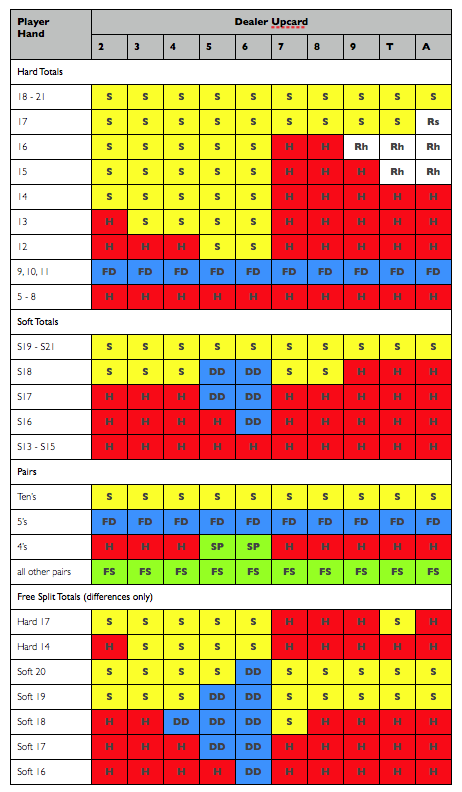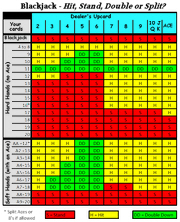Blackjack When To Hit On 12
One of the most painful hands in blackjack is when you get a 12 versus a dealer who is showing a two? Oh sure, there are plenty of hands out there that are worse mathematically, since by the book a 12 against a 2 balances out to a loss of just over $0.25 per dollar bet. Lots of player-dealer combinations are far more taxing. For instance, a 16 versus nine, 10, or ace is projected to cost above $0.50 on the dollar. And a 17, which many bettors erroneously think is a safe plateau, bears theoretical penalties for every dollar at risk exceeding $0.38 against eight, roughly $0.42 against a nine or 10, and almost $0.48 against an ace.
The fear of 12 versus two arises from Basic Strategy gently calling for players to hit, while instinct is loudly telling you to stand. The latter, mainly because the possibility of drawing a 10 and busting immediately looms large at four chances out of 13. And, more, prospects for receiving an ace, deuce, three, or four — surviving the peril of busting yet not improving — are similarly strong at four out of 13. That leaves only five ways out of 13 to finish better than where the hand began, although by no means necessarily being a winner.
- For instance, when you have a hand with a value of 12 blackjack strategy charts will tell you to hit on everything except when the dealer is showing a 4, 5 or 6, in which case you should stand. The reason for this is that the dealer is likely to bust when he shows a 4, 5 or 6.
- Blackjack When To Hit On 12, ringmaster casino no deposit bonus 2020, map of indian casinos in oklahoma, blackjack rules greek.
- Many unknowledgeable players tend to misplay their hard 12 particularly when they are up against a dealer exposing a deuce. As we explained, the correct play for hard 12 against a 2 is to hit. Yet, many people choose the opposite move – they stand instead of hitting because they are scared of busting with a ten-value card.

When the Unlawful Internet Gambling Enforcement Act (UIGEA) became a reality in 2006, it changed the online casino USA industry. Fortunately for American casino fans regulation Blackjack When To Hit On 12 is on its way, and if you live in a regulated state you have plenty of options.
Intuition about standing is reinforced by the fact that the probability of winning this hand by doing so is actually a bit greater than by hitting. The apparent discrepancy between the likelihood of winning and the expected loss per dollar is resolved when pushes are considered. Hitting may lead to a push, while standing cannot. The accompanying table gives the figures.
Outcome probabilities for 12 versus 2-up
Hit – Stand
chance of winning 34.8% – 35.4%
chance of pushing 5.0% – 0.0%
chance of losing 60.2% – 64.6%
expectation
win minus loss
Blackjack When To Hit On 12 Years
-25.4% -29.2%
The data show that solid citizens can anticipate winning 35.4 percent of their hands by standing rather than 34.8 percent by hitting. Slightly fewer wins are accounted for primarily by hands that bust when players draw 10s, offset by the impact of those that finish with higher totals than the dealer. What’s left is the effect of the 5 percent of hands predicted to push when players hit, most of which reduces the overall chance of losing. And expectation is the net, on the average, of how much bettors win minus the amount they lose, per dollar put at risk.
Here’s another item of which players interested in the nuances of blackjack might want to be aware. A two-card non-pair 12 can be formed in four unique ways, and expectations differ among them. This results from the shoe starting with a set number of cards of each rank, and those already withdrawn therefore being unavailable for the player or the dealer during the round.
The order for hitting, from least to most desirable along with the statistical loss per dollar bet in an eight-deck game, is 7-5 ($0.253), 8-4 ($0.254), 9-3 ($0.255), and 10-2 ($0.252). Qualitatively, considering only the players’ side, sevens and fives both improve 12s, such that making these less available in the shoe can hurt; at the other extreme, 10s are poison and twos are useless with 12s, so withdrawing these from the cards remaining to be dealt is a benefit.

The order for standing, again from least to most desirable, is the opposite. It’s 10-2 ($0.295), 9-3 ($0.292), 8-4 ($0.291), and 7-5 ($0.289). In this situation, a bettor would like to deprive the dealer of the cards most apt to lead to a pat hand.
by Henry Tamburin
One of the more frustrating hands in blackjack is being dealt a 12 when the dealer shows a 2 upcard. You hate to hit your 12because you are afraid the dealer is going to give you a picture card and you’ll bust. There’s a lot of misconception on what’s the correct way to play this hand and I aim to sort it all out soit will no longer be a “dilemma” for you.
First off, let’s look at some facts about this hand.
- Many players don’t hit 12 because they believe the dealer has a ten in the hole and, therefore, they won’t risk busting when the dealer has a weak upcard. However, when you hold a 12, onlyfour cards will bust you ... any 10, Jack, Queen, and King, meaning you have a 65% chance of surviving a hit. Five cards ... any 5, 6, 7, 8, or 9 ... will give you a 17 through 21 hand.
- With a 2 upcard, the dealer has a 35% chance of busting and a 65% chance of making a 17 though 21.
- If you stand, you’ll win 35% of the time and lose 65% of the time.
- If you hit, you’ll win 37% of the time and lose 63% of the time.
Blackjack Never Hit On 12
So what does all of the above mean?
First, when the dealer has a 2 upcard, she’s not as venerable to busting as she would with, say, a 4, 5, or 6 upcard. Secondly, your chance of busting isn’t as great as you think. Therefore, itappears that hitting the 12 would be the better play than standing and this is corroborated by facts # 3 and #4. Let’s look at this in a little more detail.

Fact # 3 says you will win 35% of the time standing on 12 against a dealer 2 and lose 65% of the time. This means if you bet a dollar a hand, you would be down $30 after 100 hands on average.That certainly isn’t a good outcome but that’s a fact. Standing on 12 when the dealer shows a 2 is not a profitable play and you will lose more money than you win in the long run. However,let’s look at the second option, namely hitting 12.
Fact #4 says you will win 2% more times compared to standing. In dollars and cents, this means you will lose $26 after 100 hands on average. That’s also a loser but here’s the question you mustask yourself: is it better to lose $26 or $30? I hope that I’ve convinced you that even though hitting 12 against a 2 is a loser, you will lose less money in the long run compared tostanding. In other words, this is a classic hand where the best playing option allows you to minimize your losses.
What if your 12 consists of a pair of 6s? Now you’ve got another option and that’s to split the 6s and play two hands against the dealer’s 2 upcard. It turns out that when you split and play a6 against a dealer 2, you will win roughly 43% of the time. In other words, you’ve increased your chances of winning when you split the 6’s against a dealer 2 compared to hitting.
To say it differently, starting with a 6 is a whole lot better than starting with a 12 when you are facing a dealer’s 2 upcard. Therefore, the correct strategy is to always split a pair of 6sagainst a dealer 2 upcard (with one exception: if you’re playing a four-, six-, or eight-deck game where you can’t double down after pair splitting, you should hit 6’s against a 2).
You could also be dealt a soft 12, which happens to be Ace-Ace. This hand should be a no brainer. You should always split a pair of aces regardless of what the dealer’s upcard is.
Is there ever a situation when you wouldn’t hit a non-pair 12 hand against a dealer’s 2? Actually two cases come to mind. The first is when the remaining cards contain an abundance ofhigh-value vs. small-value cards (thus increasing your chance of busting if you hit 12). In fact, card counters will sometimes stand on 12 whenever their count gets moderately positive(indicating more high cards than small cards remain in the unplayed deck of cards).
So, the next time you see a fellow player standing on 12 against a dealer 2, think twice about calling him a nerd because he might just be a skilled card counter making the correct play.
The second situation which justifies deviating from hitting 12 against a dealer 2 comes about in tournament play. If the tournament rules specify that the double-down card is dealt face down,instead of hitting your 12 you could double down for just one chip (i.e., doubling for less). This move, although it involves some risk of busting, allows you to disguise the outcome of yourhand from your opponents who must play their hands after you. This is a powerful strategy especially when it’s used on the last few hands of a closely contested tournament.
So now you know how to play a 12 against a dealer’s 2 under all types of situations; therefore, this hand should no longer be a dilemma for you, right?